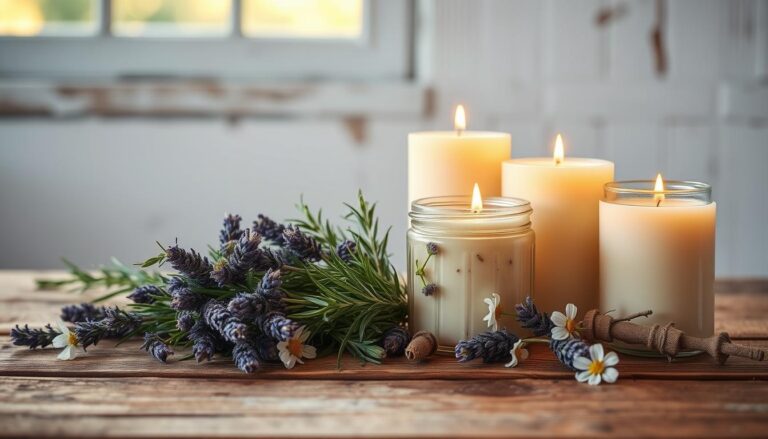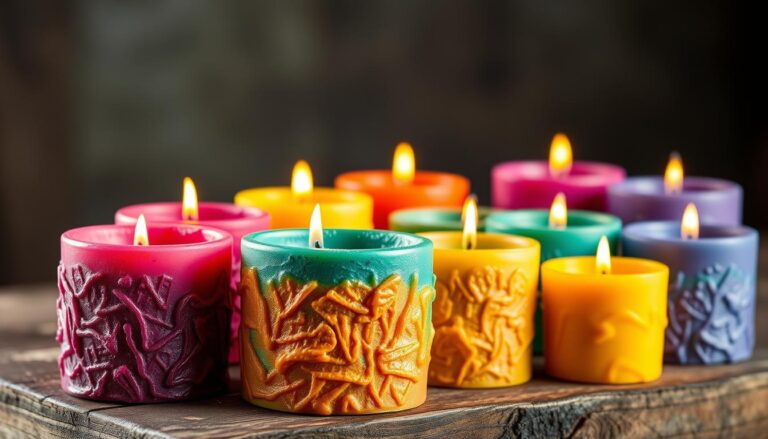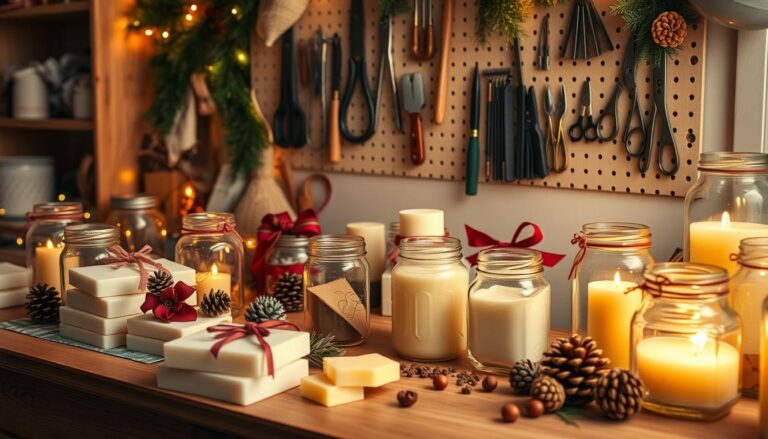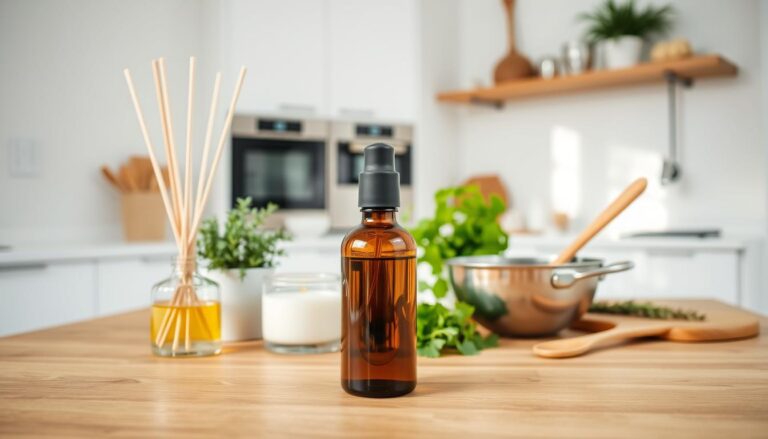What if you could capture the sweet, uplifting essence of a blooming garden and bring it indoors? With a simple floral spray recipe, you can transform any room into a vibrant oasis that feels bright, airy, and full of life.
Whether you’re looking to banish winter blues, uplift your mood, or simply enjoy the beauty of nature indoors, these floral spray recipes are the perfect solution.
In this article, we’ll explore 9 refreshing floral spray recipes that will bring the sweetness of spring into your home.
From classic rose and lavender to bright citrus and jasmine, we’ll show you how to combine essential oils and floral ingredients to create unique, all-natural sprays that will leave your home smelling fresh, lovely, and utterly delightful.
Get ready to breathe new life into your space!
Key Takeaways
- Customize home fragrances without synthetic additives
- Enhance moods using plant-based aromas
- Save money compared to commercial products
- Create sprays for relaxation or energy
- Select ingredients matching personal needs
- Combine scents for unique results
9 Essential Oil Blends for Spring
Here are 9 floral spray recipes, each crafted to refresh and lighten up your space after winter.
Each recipe below is for a 100 ml spray bottle — a common and convenient size.
🧴 Base Formula for DIY Essential Oil Room Sprays (100 ml):
- 20–25 drops essential oils (look below).
- 1 tbsp (15 ml) witch hazel or vodka (helps disperse oils).
- Distilled water to fill (about 85 ml).
- 100 ml amber glass spray bottle.
Pro tips:
✅ Shake before each use.
✅ Always test spray on fabrics before wide use.
🌼 Spring Awakening
- 8 drops Lemon
- 6 drops Lavender
- 4 drops Peppermint
- 2 drops Rosemary
Effect: Uplifting and energizing, with herbal freshness.
🍋 Citrus Bloom
- 10 drops Sweet Orange
- 6 drops Geranium
- 4 drops Grapefruit
Effect: Bright, floral, and mood-lifting.
🌿 Meadow Breeze
- 6 drops Bergamot
- 6 drops Lavender
- 4 drops Spearmint
- 4 drops Lemongrass
Effect: Clean and vibrant, like a fresh meadow after rain.
🌷 Floral Garden
- 8 drops Geranium
- 6 drops Lavender
- 4 drops Ylang Ylang
- 2 drops Clary Sage
Effect: Sweet, floral, and soothing.
🍐 Spring Orchard
- 8 drops Lime
- 6 drops Lemon
- 4 drops Basil
- 2 drops Spearmint
Effect: Crisp, fruity, and clean.
🌸 Petal Soft
- 6 drops Palmarosa
- 6 drops Lavender
- 4 drops Geranium
- 4 drops Mandarin
Effect: Delicate floral citrus — airy and feminine.
🌞 Sunlight & Linen
- 10 drops Lemon
- 6 drops Eucalyptus
- 4 drops Tea Tree
Effect: Smells like fresh laundry in a spring breeze.
🌾 Greenhouse Glow
- 7 drops Rosemary
- 5 drops Peppermint
- 4 drops Lemon
- 4 drops Cypress
Effect: Crisp and green, like a sunlit garden room.
🍊 Citrus Herb Fusion
- 6 drops Grapefruit
- 6 drops Basil
- 4 drops Sweet Orange
- 4 drops Bergamot
Effect: Refreshing and clarifying with a zesty herbal twist.
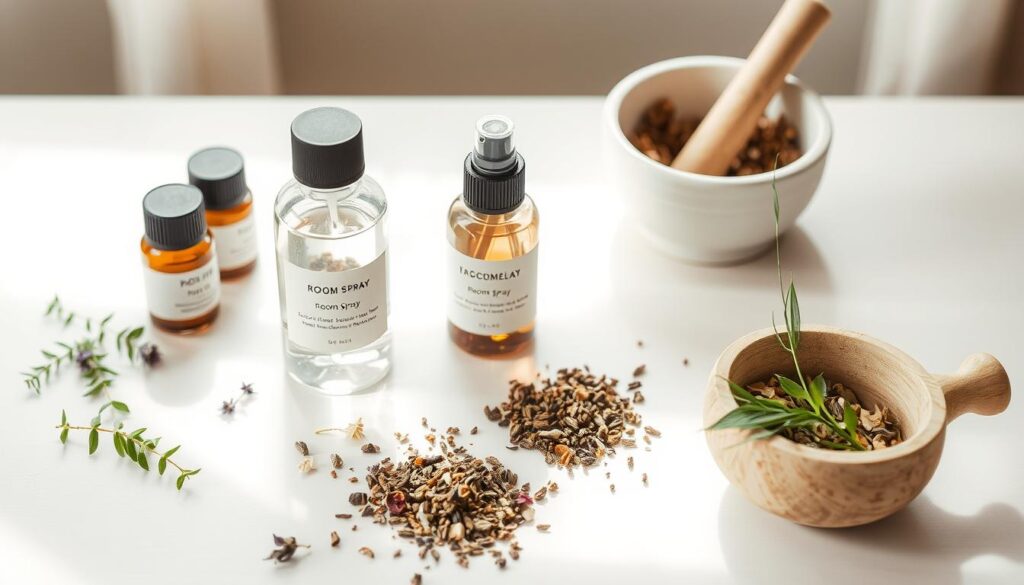
Refresh Your Space with a Floral Spray Recipe
Breathe new life into your surroundings with personalized fragrances that spark joy.
Unlike mass-produced alternatives, homemade sprays let you curate every element of your environment. You become the perfumer, mixing notes that resonate with your unique taste.
Discover the Power of Floral Aromas
For thousands of years, people have turned to flower-derived scents to shape atmospheres.
These natural solutions do more than mask odors—they transform how spaces feel. Crafting your own versions means skipping questionable chemicals found in conventional products.
Pure plant extracts offer dynamic benefits beyond basic fragrance. Certain combinations can calm racing thoughts or sharpen focus.
When layered thoughtfully, these elements create evolving perfumes that shift with your daily rhythm.
Choosing natural options supports both personal wellness and environmental health. Every spritz becomes an act of self-care and ecological responsibility.
Best of all, you’ll develop signature creations that feel authentically yours.
Benefits & Therapeutic Properties of Floral Essential Oils
Unlock nature’s aromatic secrets to elevate your well-being. These concentrated plant extracts offer more than pleasant scents. They interact with your body and mind in surprising ways.
Let’s explore how specific floral spray recipe compounds support emotional balance and physical health.
Aromatherapy and Mood Enhancement
Your nose acts as a direct pathway to your brain’s emotional center. When you inhale lavender or chamomile scents, their molecules trigger chemical reactions that lower cortisol levels.
Studies show these interactions can improve sleep quality by 25% in regular users.
Certain plant extracts help balance hormones linked to daily stress.
Try diffusing jasmine during work hours to maintain focus, or use rose oil before bedtime to quiet racing thoughts.
The effects aren’t just temporary. Consistent use of a floral spray recipe reshapes how your nervous system handles pressure.
| Oil | Mood Benefits | Best Time to Use |
|---|---|---|
| Lavender | Reduces anxiety | Evening relaxation |
| Rose | Boosts self-esteem | Morning routine |
| Geranium | Balances emotions | Midday stress |
Skin Care and Natural Healing
Many plant extracts double as gentle skincare allies. Rosehip oil contains vitamins that fade acne scars, while geranium’s astringent qualities minimize pores.
These solutions work without stripping your skin’s natural moisture barrier.
Lavender’s antimicrobial properties make it ideal for treating minor burns.
Mix it with aloe vera gel for sunburn relief. For sensitive complexions, diluted chamomile oil reduces redness better than many pharmacy creams.
Related: Make a spa-day at home with these essential oil blends.
How to Create Your DIY Floral Spray Recipe
Crafting your own room spray starts with quality ingredients and simple techniques. Gather materials that preserve scent integrity while ensuring safety.
Let’s break down what you’ll need and how to combine elements effectively.
Essential Ingredients and Tools
Dark glass bottles protect mixtures from light damage. Use distilled water to prevent bacterial growth, and witch hazel helps bind ingredients.
Carrier liquids like jojoba or almond oil safely dilute potent extracts.
Measure with precision using pipettes or graduated cylinders.
Label each batch with creation dates and ingredient lists. Store finished sprays in cool areas to extend shelf life.
Step-by-Step Mixing Process
Start by bruising flower petals to release natural oils.
Place them in a clean jar with your chosen carrier liquid. Shake vigorously for 30 seconds, then let sit overnight.
Strain the mixture through cheesecloth into your spray bottle. Add 15-20 drops of concentrated extracts per 4 ounces of base liquid. Cap and shake again before each use.
Test strength by spraying on fabric scraps first. Adjust ratios if scents fade too quickly.
Remember to always keep blends away from heat sources to maintain potency.
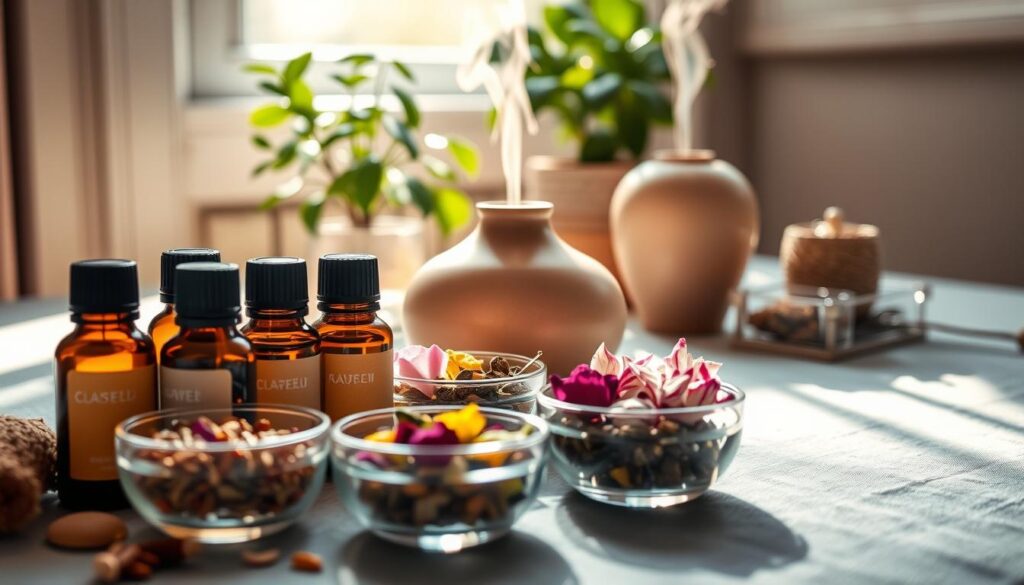
Designing Room Sprays with floral and fresh essential oil blends
Crafting a captivating floral spray recipe involves layering aromas like a perfumer. Think of fragrances as having three layers: bright opening notes, heart tones, and lasting base impressions.
Citrus peels or mint leaves make zesty top notes that greet your senses first. Middle notes like rose or chamomile form the core identity, while cedarwood or vanilla provide depth.
Pairing flower-based extracts with contrasting families creates balanced results.
Try combining ylang-ylang with bergamot for a sunlit garden effect.
For cozy spaces, mix lavender with earthy patchouli. These combinations evolve over time, offering dynamic experiences.
| Scent Family | Example Oils | Pairing Benefits | Best Use |
|---|---|---|---|
| Citrus | Lemon, Grapefruit | Adds brightness | Morning energizing |
| Woodsy | Sandalwood, Pine | Grounds sweet tones | Evening relaxation |
| Herbaceous | Rosemary, Basil | Clears mental fog | Home office |
Seasonal changes inspire new creations. Capture spring rains with jasmine and vetiver. Autumn blends might feature geranium with cinnamon.
Always start with small batches—adjust ratios until you achieve harmony between sweet and crisp elements.
Consider room size when mixing. Large spaces need stronger base notes, while bathrooms benefit from airy citrus accents.
Test different combinations on paper strips before finalizing. Your perfect balance awaits through experimentation!
DIY Room Spray Recipes for Every Mood
Craft signature scents that shift energies in your living spaces. These four formulas adapt to daily rhythms, from morning motivation to evening tranquility.
Each of these floral spray recipes concentrate plant extracts for targeted emotional support.
Romantic Rose Garden Blend
10 rose + 5 geranium + 3 ylang-ylang drops create warm, inviting atmospheres. Rose promotes emotional openness, while geranium balances hormones. Ylang-ylang adds exotic depth for connection moments.
Serene Lavender Dream Blend
Mix 8 lavender + 4 chamomile + 3 bergamot drops. Lavender calms racing thoughts, chamomile eases tension. Bergamot’s citrus edge prevents drowsiness—ideal for reading nooks.
Energizing Citrus Blossom Blend
Combine 6 sweet orange + 4 grapefruit + 3 lemon + 2 lime drops. This sunlit mix boosts alertness naturally. Citrus scents stimulate mental clarity within 30 seconds of spraying.
Here are other Citrus Essential Oil Blends to enhance your focus and energy.
Sensual Jasmine Evening Blend
8 jasmine + 4 sandalwood + 3 patchouli drops craft luxurious nights. Jasmine elevates confidence, sandalwood grounds energy. Patchouli adds earthy mystery perfect for intimate gatherings.
Customize ratios based on room size. Add 1-2 extra drops for high ceilings. Test new combinations seasonally—try cinnamon in winter or peppermint during summer heat.
Enhancing Your Experience: Usage and Application Tips
Master the art of scent application to elevate everyday moments. Proper techniques ensure your creations work effectively while keeping spaces safe for everyone.
Let’s explore how to maximize fragrance impact of your floral spray recipe.
Caring for Your Essential Oils
Store plant extracts in dark glass bottles away from heat sources. Cool, dry spaces like cabinets preserve their potency longer.
Citrus-based options last 6-9 months, while woodsy types stay fresh for 2+ years.
- Label bottles with purchase dates
- Keep caps tightly sealed
- Refrigerate citrus varieties
Test older oils by rubbing a drop between fingers. Faded scents mean it’s time to replace them. Never apply expired products to your skin or fabrics.
Diffusion Techniques for Maximum Impact
Match diffuser styles to room sizes. Ultrasonic models work best in bedrooms, while nebulizers suit large living areas.
Run devices for 30-minute intervals to prevent overwhelming scents.
| Diffuser Type | Room Size | Water/Oil Ratio |
|---|---|---|
| Ultrasonic | Small-Medium | 100ml : 5 drops |
| Nebulizing | Large | No water needed |
| Reed | Any | 1:3 oil/carrier mix |
Clean devices weekly with white vinegar. This prevents residue buildup and maintains scent purity. For car vents, apply 2 drops to cotton pads instead of spraying.
Take Control of Your Atmosphere
Crafting a personalized floral spray recipe puts you in control of your environment’s atmosphere.
You’ve discovered how simple ingredients can transform ordinary spaces into mood-boosting sanctuaries. Natural solutions beat store-bought sprays by skipping harsh chemicals while offering therapeutic perks.
These creations do more than smell nice. They support your well-being.
Aromatherapy through plant-based mixtures helps balance daily stress. Your mind finds calm, while your body absorbs nature’s gentle healing properties.
Choosing DIY options means saving money and tailoring scents to your lifestyle. Experiment with ratios to craft blends that evolve with your needs.
Ready to start? Grab those bottles and let creativity flow. Your home deserves scents that uplift, refresh, and inspire—all from ingredients you trust.
Every spritz becomes a step toward healthier living.
FAQ
Can I use these blends in a diffuser instead of a spray?
Yes! Most recipes work in diffusers. Just skip the water and use 5–10 drops per 100ml of carrier liquid. Check your device’s instructions for exact ratios.
How long do DIY room sprays last before expiring?
Homemade sprays stay fresh 2–3 months if stored in dark glass bottles away from heat. Add a teaspoon of vodka to extend shelf life and preserve scent integrity.
Are floral oils safe for pets or kids?
Some oils, like jasmine or ylang ylang, can be sensitive. Always dilute properly and avoid direct contact. Consult a vet or pediatrician for specific safety guidelines.
Can I mix floral oils with citrus for a brighter scent?
Absolutely! Pairing lavender with bergamot or geranium with sweet orange creates uplifting aromas. Start with equal ratios and adjust based on your preference.
What’s the best carrier for sensitive skin?
Fractionated coconut oil or jojoba are gentle options. They absorb quickly and reduce irritation risks. Patch-test any new mix before full-body use.
Do these blends help with stress relief?
Yes! Scents like chamomile and neroli promote calmness. Spritz your pillow or diffuse during meditation to ease tension and improve mental clarity.
How do I fix a blend that smells too strong?
Balance overpowering notes with lighter oils like lemon or peppermint. Add one drop at a time until the aroma softens to your liking.
Can I substitute dried flowers for essential oils?
Dried petals add visual appeal, but oils provide stronger fragrance. For a dual effect, infuse flowers in water first, then mix with a few drops of oil.
